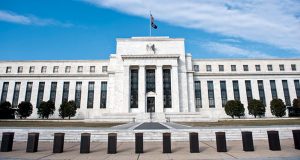Will The Fed’s Bold Moves Save The Economy?
 It looked like it was going to be another slow week of fiscal cliff watching. Then the Fed meeting happened. And while the market’s reaction has been tepid (as of this writing), there’s a whole lot to digest in the Fed announcement.
It looked like it was going to be another slow week of fiscal cliff watching. Then the Fed meeting happened. And while the market’s reaction has been tepid (as of this writing), there’s a whole lot to digest in the Fed announcement.
Make no mistake, the Fed’s statement is a huge deal. In fact, it’s a historic shift of Federal Reserve strategy.
Here’s the deal…
The Fed is expanding its bond purchasing program as well as adding parameters to guide when it will raise interest rates in the future.
Basically, the world’s most powerful central bank is saying they’re not fully confident the US economy can recover without additional stimulus. Some of this has to do with the fiscal cliff. Some of it has to do with Europe.
But the bottom line is really unemployment. There are just not enough people getting hired.
Consequently, the Fed announced it will not raise interest rates from their rock bottom level until unemployment falls to 6.5% or below. The condition applies as long as inflation stays at 2.5% or below.
I believe this is good news for several reasons.
It means the Fed isn’t going to pull the plug on low rates because of political influence. Monetary policy should have nothing to do with politics. This helps ensure the separation.
What’s more, it also means the Fed won’t raise rates prematurely. Employment has to rebound for the economy to improve. Plus, 2.5% inflation is a perfectly healthy rate to have during a recession/slow economic period.
And that’s not all…
The Fed is adding a second chunk of bond buying to its stimulus package.
The central bank will add $45 billion in Treasury buying per month to the existing $40 billion in purchases of mortgage backed securities. The $45 billion in Treasury securities will replace Operation Twist which ends at the end of the year.
The additional bond buying is big news. You see, Operation Twist changed the maturity profile of the Fed’s balance sheet, but it didn’t expand the Fed’s balance sheet. However, this new program will add to the balance sheet.
The idea is that buying Treasury securities will help keep key rates low, such as mortgage rates. Meanwhile, the mortgage backed securities purchases should keep the market liquid.
Both parts of the program are beneficial to home buyers and others who are financing large asset purchases.
Okay, so are these historic steps going to actually help?
I certainly think so. Keeping rates low is good for individuals and businesses alike. And, there’s now a solid level of confidence regarding when the Fed will raise rates – and it won’t happen until unemployment decreases substantially.
Even better, once the fiscal cliff issues are resolved, the markets should react very positively to the Fed news. I believe we’re in line for a nice rally – particularly in small caps and penny stocks – once the fear over falling off the cliff is past us.
Yours in profit,
Gordon Lewis
Category: Breaking News




